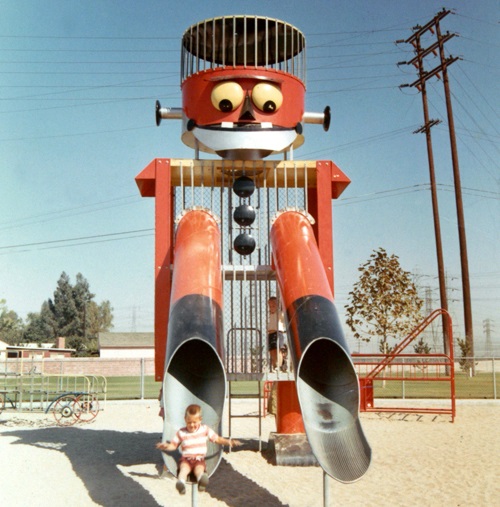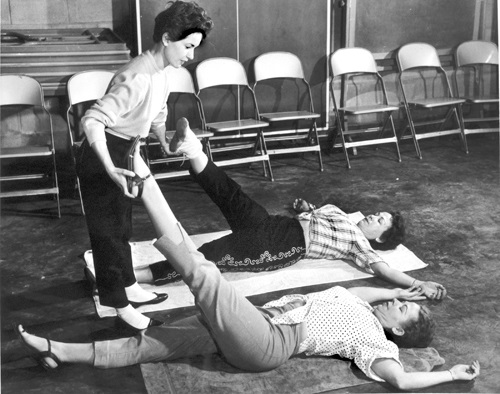Lakewood’s recreation programs provided something for every member of the family. As Dave Rodda recalled “My early impressions are kids and families having a blast and using the facilities. It was a social center. There wasn’t a lot of money, but there were parks and recreation. And everybody came to the parks and everybody participated in recreation.”
Time magazine noted the extraordinary scope of Lakewood’s recreational programs in 1960. “The town's recreation league boasts 110 boys' baseball teams (2,000 players), 36 men's softball teams, and ten housewives' softball teams. In season, the leagues play 75 boys' and 30 men's basketball teams, 77 football teams, all coached by volunteers, while other activities range through drama, dance and charm classes, bowling, dog-training classes, Slim 'n' Trim groups, roller skating, photography, woodcraft, and lessons in how to ice a cake.”
Organized adult sports leagues began in the 1950s in response to the recreational needs survey in which residents had called for “organized adult sports and activities.”
 Giganta arrived at Mae Boyar Park in 1967 and delighted a generation of Lakewood youngsters.
Giganta arrived at Mae Boyar Park in 1967 and delighted a generation of Lakewood youngsters.
Men’s leagues played softball and basketball, and in 1955, the park district began offering “housewives’ leagues” for softball, volleyball, volley tennis, and tennis.
Team names included the Del Valle Dish Dodgers and the Mighty Mothers. Not only did the women play ball, they also socialized after the games with coffee-and-doughnut get-togethers and potluck luncheons hosted by the home team. “We called them ‘housewife sports,’” said Rodda.
Held in the morning and afternoon, these programs were extremely popular. “Every park probably had at least two or three teams,” Rodda remembered. “Moms would come down and play softball, and the park directors would coach them, and they would play volleyball and volley tennis, and they participated in tennis instruction and those kinds of things.”
For girls, popular activities at the parks included girls’ clubs (with names such as the Bolivar Belles, San Martin Busy Bees, and Del Valle Debutantes), which participated in dances, games, excursions, crafts, and service-related projects, as well as charm classes and cheerleading for the boys’ teams.
Sports programs for girls were almost nonexistent in the city's early years, but Lakewood became a pioneer in offering girls’ sports. Rodda remembered “For the boys, we had full-on, three-sport seasons that just followed the traditional baseball, football, and basketball seasons. For the girls, we would have girls’ softball and that would be during the summer, coached by a mom.”
It was not until 1960 that the first girls’ softball league was formed. Following the tradition of boys’ sports, volunteer coaches were recruited from the women’s sports leagues, and every girl had the opportunity to play in every game.
 Programs for adults, like women's fitness, became part of the city's recreation offerings in the 1960s.
Programs for adults, like women's fitness, became part of the city's recreation offerings in the 1960s.
Rodda described the evolution of the girls’ sports program. “Probably the thing that sticks out the most in my mind is the equality of girls participating in athletics. We were so far ahead of everyone else. Because we sat down one day and said, hey look, we have this great Lakewood Youth Sports Program, everybody calls it the model sports program, but we don’t have the same thing for the girls. We’ve got a little bit, but not much. And so we developed a complete program the same way. Whatever the guys got, the girls got. Maybe some of the sports were a little different, but the awards were the same, everything was the same: same amount of money was spent, same amount of everything. And this was in 1973 or 1974. Title IX for women’s sports wasn’t even a blip. But we were providing these kinds of services.”
Lakewood’s parks also emphasized activities that the whole family could enjoy together. Landscape architect Garrett Eckbo of Community Facilities Planners, the firm commissioned to plan several of Lakewood’s parks, recalled that the city specifically requested that his firm design “family parks.”
Lakewood also began to offer programs for Lakewood’s teens. These activities included day trips, beach parties, and play days. Beginning in 1954, the park district organized and supervised monthly teen dances. Because the teenage population was still small in the mid-1950s, there were often more chaperons than dancers.
In 1967, Lakewood began providing specialized recreation activities for disabled youngsters and young adults. These programs continue today and include the city’s championship Special Olympics teams.